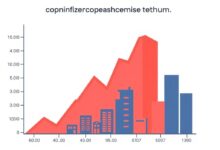What is inflation and how to adjust your portfolio for it?

To safeguard your wealth, prioritize assets that consistently yield real returns exceeding inflation rates. Incorporate commodities, real estate, and inflation-protected securities into your portfolio for effective protection against rising prices.
Your investing strategy must adapt to changing economic conditions. Regularly assess the performance of your holdings and be ready to pivot towards sectors or instruments that offer resilience in times of monetary tightening.
Consider diversifying into alternative investments such as infrastructure projects or renewable energy stocks, which tend to provide stable cash flows even during economic volatility. Maintain a balanced approach between growth-oriented and defensive assets to enhance overall stability while aiming for attractive returns.
Monitor interest rate trends closely; they directly influence the attractiveness of various asset classes. Adjusting your allocation in response to these shifts will help maintain the purchasing power of your investments over time.
Impact of Inflation on Investments
To safeguard value, investors should prioritize assets that historically outpace rising costs. Real returns are critical; thus, consider equities and commodities as core components of an investing strategy. These classes often provide growth potential that exceeds inflation rates.
Real estate is another valuable option, serving as a hedge against devaluation of currency. Properties typically appreciate over time, yielding rental income that can adjust for inflation. Diversifying across sectors can enhance resilience in fluctuating markets.
Bonds may appear safer but can erode purchasing power if yields remain below inflation. Look for Treasury Inflation-Protected Securities (TIPS) that offer interest adjusted for price increases, ensuring that real returns are maintained.
Lastly, incorporating alternative investments such as precious metals or cryptocurrencies can further stabilize portfolios during periods of economic uncertainty. Monitor these asset classes closely to align with your overall investment goals while adapting to shifts in market conditions.
Inflation Indicators to Monitor
Focus on the following metrics to refine your investing strategy and safeguard real returns:
- Consumer Price Index (CPI): Track monthly changes; a consistent rise signals increasing costs for goods and services.
- Producer Price Index (PPI): Observe this index for early signs of inflation at the wholesale level, which may eventually impact consumer prices.
- Core Inflation Rate: Exclude volatile food and energy prices for a clearer view of underlying price trends.
- Personal Consumption Expenditures (PCE) Index: Monitor this indicator favored by the Federal Reserve for its broader coverage of spending habits.
- Commodity Prices: Rising costs in commodities like oil and metals can foreshadow widespread inflationary pressures.
- Wage Growth: Increasing wages can indicate higher demand for labor, often leading to increased consumer spending and potential price hikes.
Combining these indicators with an agile investment approach can provide critical protection against diminishing purchasing power. Adjust asset allocations accordingly to maximize real returns in fluctuating economic climates.
- Earmark funds for inflation-linked securities such as TIPS (Treasury Inflation-Protected Securities).
- Diversify into sectors historically resilient during inflationary periods, such as utilities and consumer staples.
- Avoid long-term fixed-income investments that may underperform as interest rates rise in response to inflationary pressures.
Your vigilance in monitoring these indicators can greatly enhance your financial resilience and ensure sustained growth amid economic shifts.
Asset Allocation During Inflation
Prioritize assets that maintain value, such as commodities and real estate, which historically provide a hedge against rising costs. Allocate approximately 10-20% of your portfolio to precious metals like gold and silver, as they often retain purchasing power during economic instability.
Consider increasing exposure to inflation-protected securities (TIPS), which adjust principal based on consumer price indices. These can be a reliable source of real returns, ensuring that the income generated keeps pace with changing prices.
Equities should not be overlooked; focus on sectors like utilities and consumer staples that tend to perform well in inflationary environments. Aim for a mix of growth stocks that offer pricing power and dividends that may grow over time, typically representing 40-60% of your total equity allocation.
Bonds require careful selection. Short-duration bonds are preferable since they are less sensitive to interest rate changes. Limit long-term bond exposure, as their value diminishes with rising rates; consider allocating no more than 20% to this category.
Diversification is key. Include international investments to spread risk across different economies. Look for markets where currency depreciation may outpace domestic inflation rates, providing an additional layer of protection and potential for enhanced returns.
Regularly reassess your allocation strategy to adapt to market fluctuations and evolving economic indicators, maintaining a proactive approach to safeguarding wealth against diminishing purchasing power.
Rebalancing Your Portfolio Steps
Begin with a clear assessment of your current asset mix. Evaluate each investment’s performance against your target allocation and the market conditions. Identify any assets that have deviated significantly from their intended weight.
Next, quantify the impact of inflation on real returns. Focus on assets that historically provide protection against rising prices, such as commodities or real estate. Adjust your holdings to bolster these areas if necessary.
Establish a timeline for regular reviews; quarterly or semi-annual evaluations can ensure timely adjustments. Document changes in value and their rationale to maintain clarity in your investing strategy.
Consider transaction costs before executing trades. Minimize expenses by consolidating small positions or utilizing tax-efficient accounts for rebalancing efforts. This approach preserves value while maintaining strategic flexibility.
After adjustments, monitor new allocations closely to gauge their performance relative to expectations. Stay informed about economic indicators that could influence your investments, allowing you to respond swiftly if required.
Finally, remain disciplined and avoid emotional decision-making. Stick to your predefined strategy and adapt only when significant shifts in the market demand a reevaluation of your approach.







